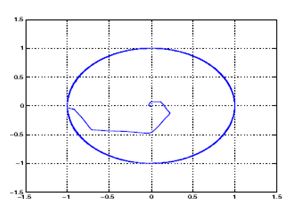ABSTRACT:
Space vector pulse width modulation (SVPWM) has been
extensively utilized in the three-phase voltage source inverters (VSI) for the
benefit of fixed switching frequency, full utilization of DC bus voltage and
superior control. In recent times, SVPWM technique was applied for active power
filter (APF) control application, as the APF is nothing but of a current controlled
VSI. The conventional SVPWM based APF has high computational burden due to
complex trigonometric
calculations and sector identification involved to
generate the compensating signal, hence the response time for compensation is
slow. In this paper, an improved SVPWM technique based shunt APF is presented
based on the effective time concept. The effective time concept eliminates the
trigonometric calculations and sector identification, thereby it reduces the
computational effort. Simulation results demonstrate the efficacy of the APF with
the improved SVPWM based control strategy. The response time for compensation
is 0.02sec.
KEYWORDS:
1. SVPWM
2. Shunt APF
3. VSI
SOFTWARE: MATLAB/SIMULINK
BLOCK DIAGRAM
Figure 1. Configuration of Improved SVPWM based
shunt APF
CIRCUIT DIAGRAM:
Figure 2. Proposed SVPWM control for APF topology
EXPECTED SIMULATION RESULTS:
Figure 3.
Simulation results (a) Source voltages, (b) Load currents, (c) Compensated
source currents, and (d) Filter currents (APF).
Figure 4.DC Bus voltage
of the proposed shunt APF
CONCLUSION:
In this paper, an improved SVPWM based shunt
APF is proposed, which is suitable for digital control realization. This method
requires less computation when compared to the conventional SVPWM technique as
it eliminates the complex trigonometric calculation and sector identification,
The performance of shunt APF with this proposed SVPWM method for harmonic
compensation is examined and proved to be worthy where the THD of the source
currents was reduced
from 24.38% to 4.47% and the response time for harmonic compensation is 0.02
sec.
REFERENCES:
[1]
H. Akagi, E. H. Watanabe, and M. Aredes, Instantaneous Power Theory and
Applications to Power Conditioning, M. E. El-Hawari, Ed. New York:
Wiley, 2007.
[2]
Recommended Practice for Harmonic Control in Electric Power Systems, IEEE Std.
519-1992, 1992.
[3]
Limits for Harmonic Current Emission, IEC 61000-3-2, 2001.
[4]
H. Akagi, “New trends in active filters for power conditioning,” IEEE Trans.
Ind. Appl., vol. 32, no. 2, pp. 1312–1332, Nov./Dec. 1996.
[5]
F. Z. Peng, “Application issues of active power filters,” IEEE Ind. Appl.Mag.,
vol. 4, no. 5, pp. 21--30, Sep./Oct.
1998.



























